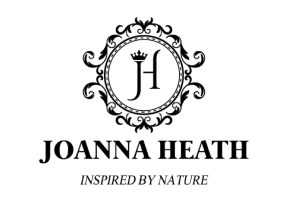
Nutrient Rich
Most of us self-conscious individuals try to eat lots of fruits and vegetables! That’s terrific, I applaud you for doing so, but my only question is, are we getting all the nutrients we need from them, OR not? So many of us, including myself are supplementing, or so we believe, by using various over the counter vitamins. But do we really know what is in our produce, and can we get everything we need without supplementation? I decided to do some personal research, because while I am spending all this money, am I getting what I am promised? Therefore, it came as no surprise, when I realized that it really depends on when you buy them, from whom, and how have they been harvested.
It might surprise you that even after we consume all these fruits and vegetables, that you may still need some form of vitamin supplementation. Upon further investigation, I discovered that many large grocery stores receive a majority of their produce before it is even anywhere close to being ripe. Thus, instead of picking the produce when its ready, the fruit is picked when it’s still in the ripening stages which I believe can make them harder to digest.. This process allows the fruits and vegetables to ripen on their own during the transport stages, and in turn have a longer shelf life as we all know ripened produce needs to be eaten within a few days or else it will rot. There are many advantages to this, one being that we can have any fruit or vegetable from any country regardless of season.
Although very convenient to shelf life, this early harvesting creates a significant reduction of vitamins and nutrients within these fruits and vegetables. In fact, the number of vitamins and minerals in unripe veggies is up to 75% lower than in ripe ones. That’s a significant change in nutritional value. Another large factor is that most of our conventional fruits and vegetables depending on where they come from are sprayed with harsh chemicals to not only stimulate growth but to kill any insects that may be interested too. What you may not realize is how much of these chemicals are actually absorbed by the fruit itself, which in turn we ingest these ourselves. I have come to know that by using various applications of chemical sprays in turn disrupts the biochemical pathways within the plant, by directly altering the nutrient quality, taste, and overall health of the plant. There has been numerous studies linked to the negative effects of these chemical applications such as respiratory problems, reproductive issues, endocrine system disruption, neurological damage, and increased risk of certain cancers. 1
So how do we go about eating the most nutrient fruits and vegetables? For starters I would strongly recommend getting to know your local farmers 2 and their practices. If they use sustainable practices I would get a majority of your produce from them, secondly try buying fruits and vegetables that are in season as the ones that aren’t have to come from afar, which again cannot be picked at that golden, ripened stage. In season means only a short period of time but you can pick as much as you can and preserve it yourself. For example, fermenting cucumbers to pickles, cabbage to Sauerkraut etc. Additionally, you can jar them, I find fresh tomatoes, fruits, make great salsas, pickles, relishes and condiments. What’s more, you could simply freeze them, which is an also economical option when fresh is unavailable or too expensive allowing you to retain those nutrients. 3 All of which prolongs their shelf life within your home.
Me personally, I do a combination of things. I purchase as much as I can from my local farmers, grow a few things of my own, like herbs and spices which I can dry and store. I purchase some frozen fruits and vegetables and then I buy the remainder at my local grocery store. It’s very difficult to ensure your food has the most in today’s modern world but knowing how and where to purchase them can help you make educated choices, and get the best nutrients from your produce.
1. Pesticide Action Network, “Promoting safe and sustainable alternatives to hazardous pesticides.” Pesticide Action Network UK
2. Klavinski, Rita, “7 Benefits of Eating Local Foods.” Michigan State University Extension, April 13, 2013
3. Pollan, Michael, “Michael Pollan Answers Readers’ Quesions.” The New York Times Magazine, October 6, 2011.
"Return to Nature" With each purchase 15% of the sale proceeds are returned back to nature through the Joanna Heath Foundation Fund.
